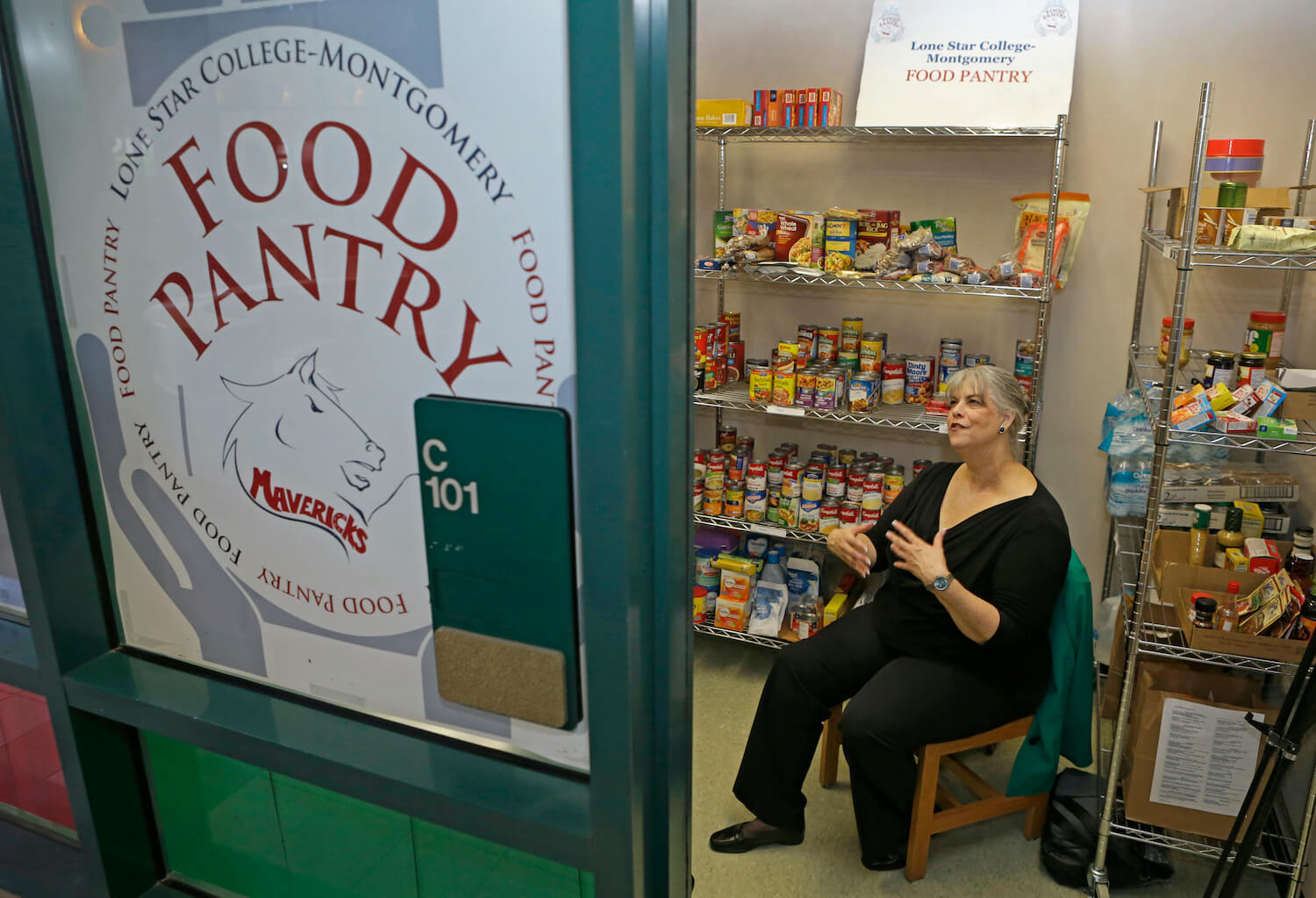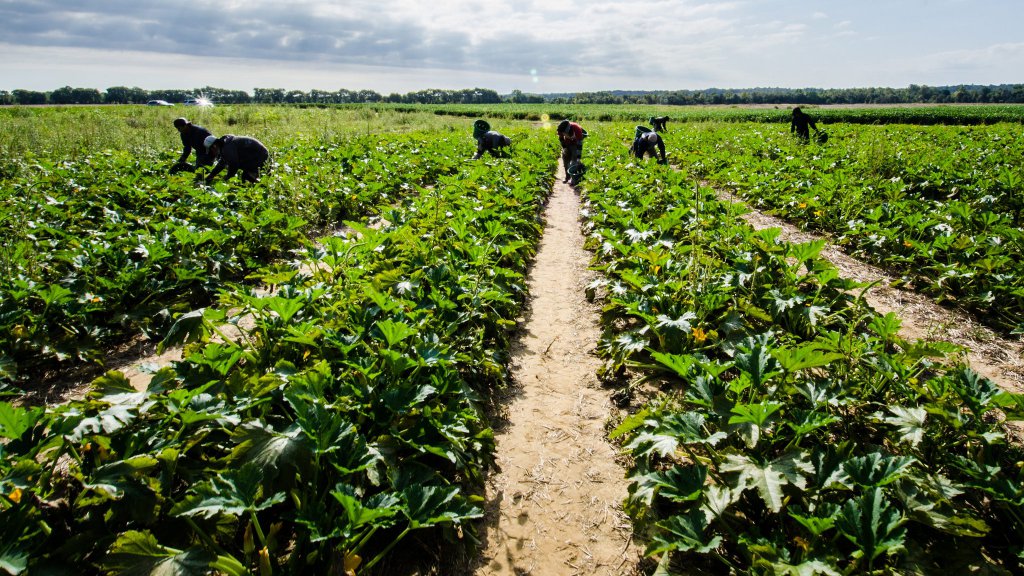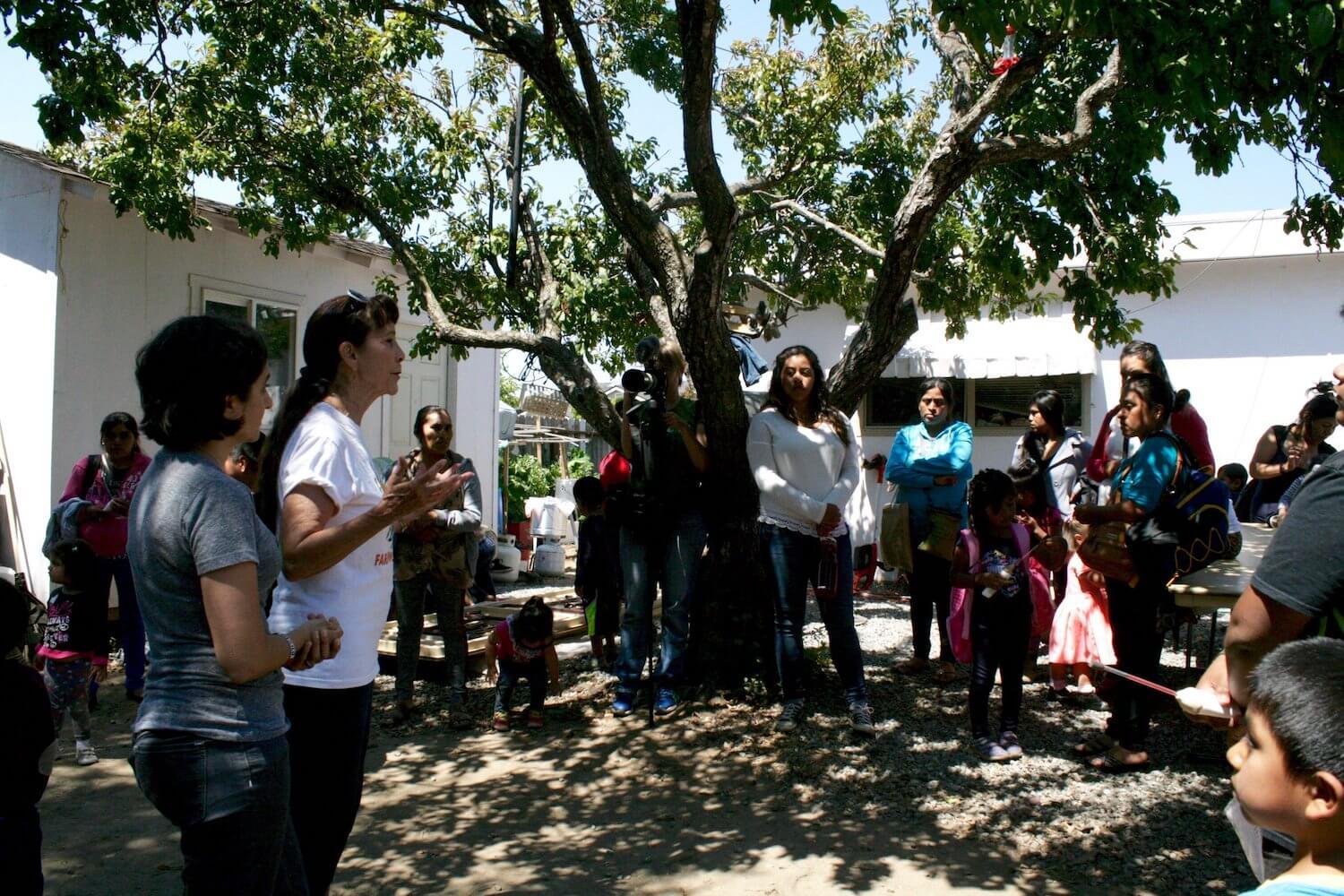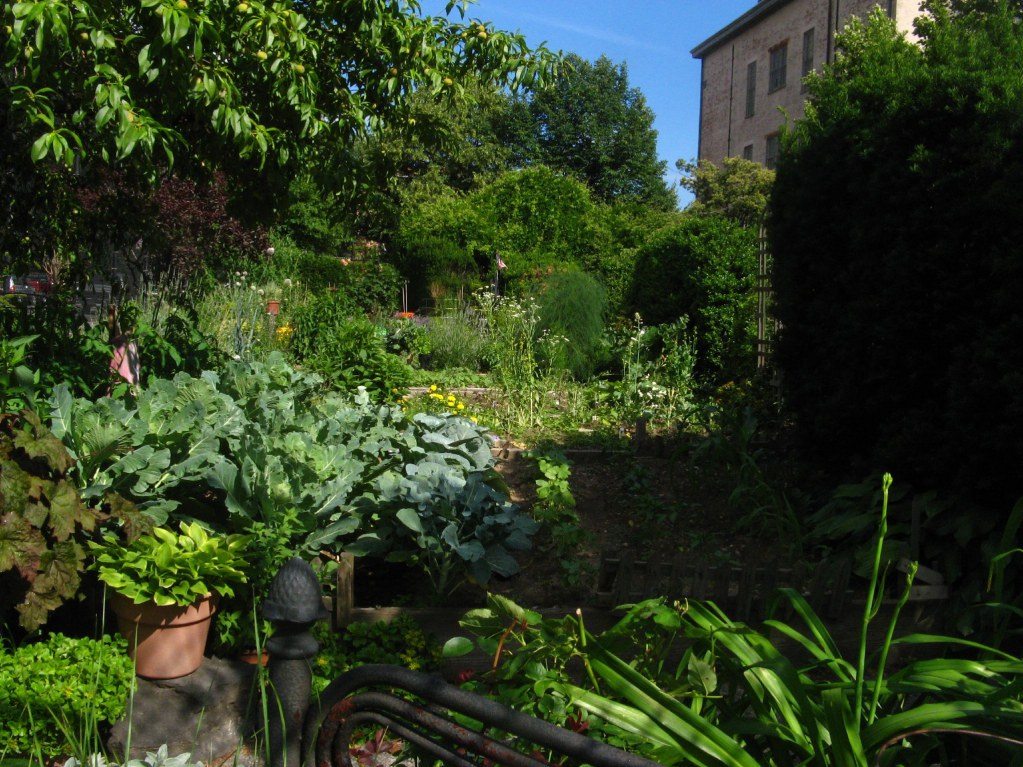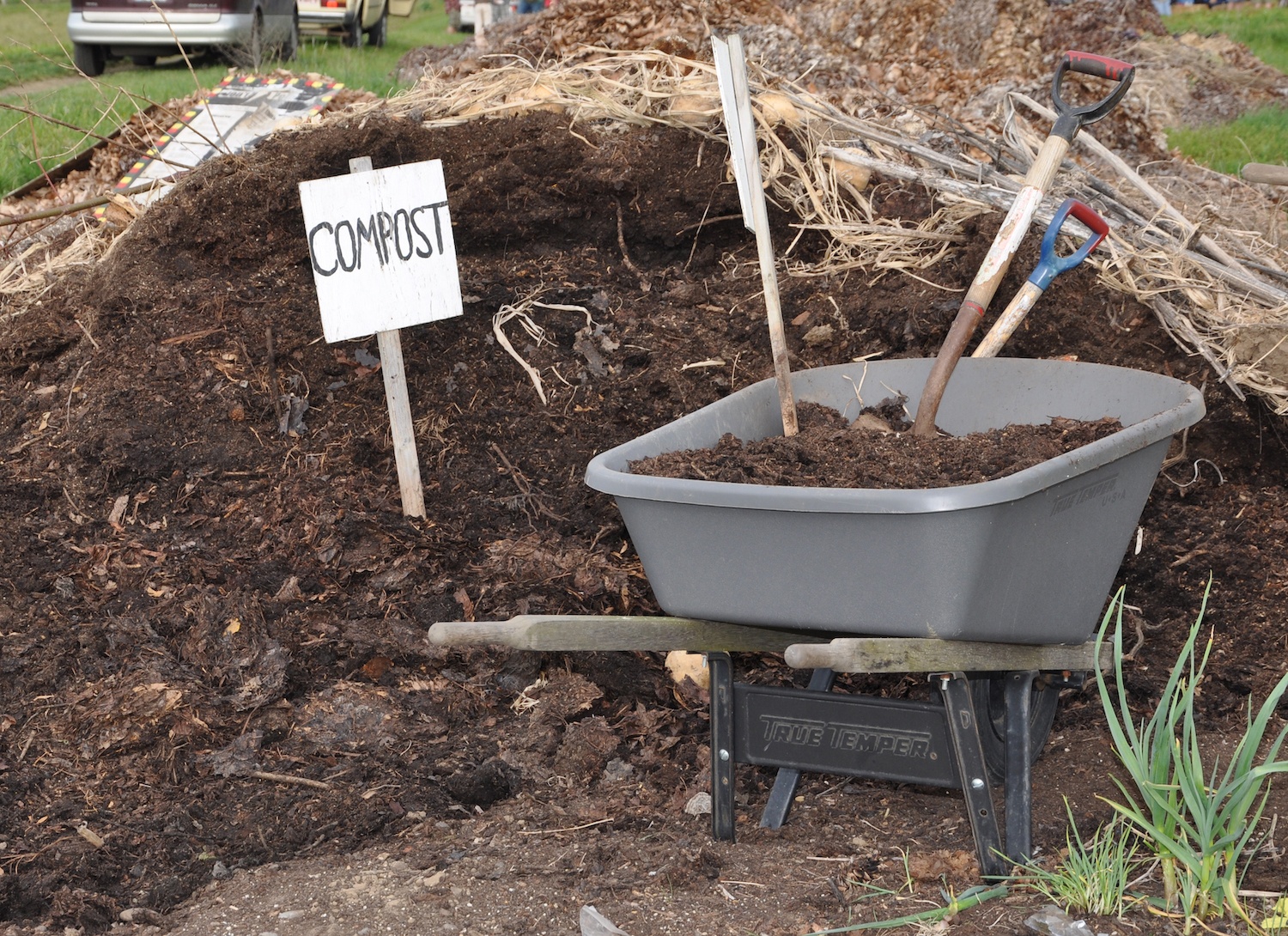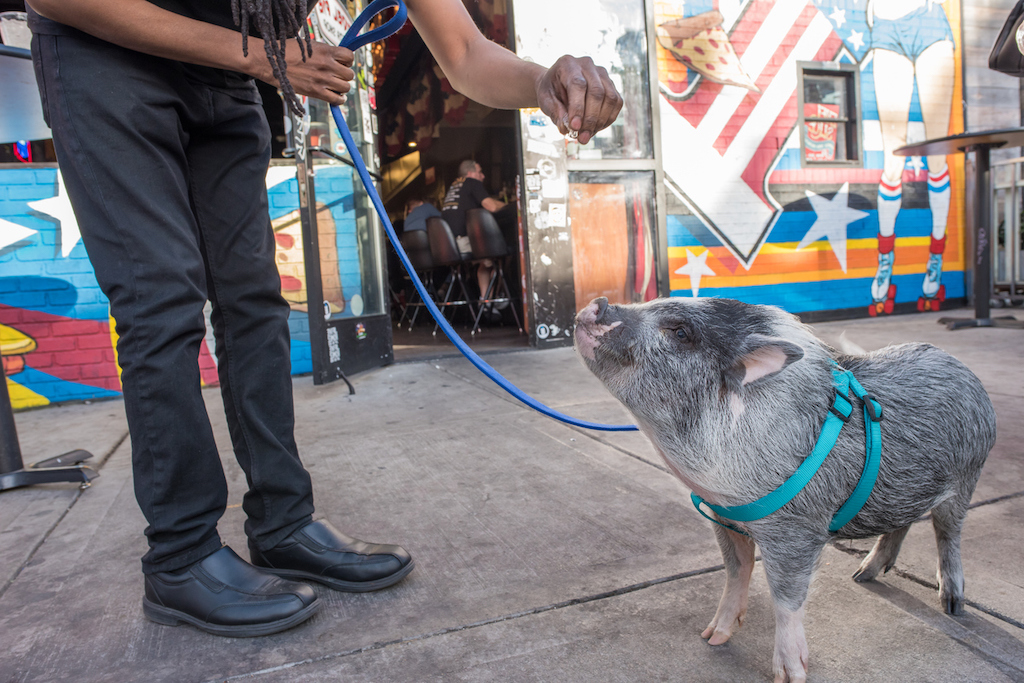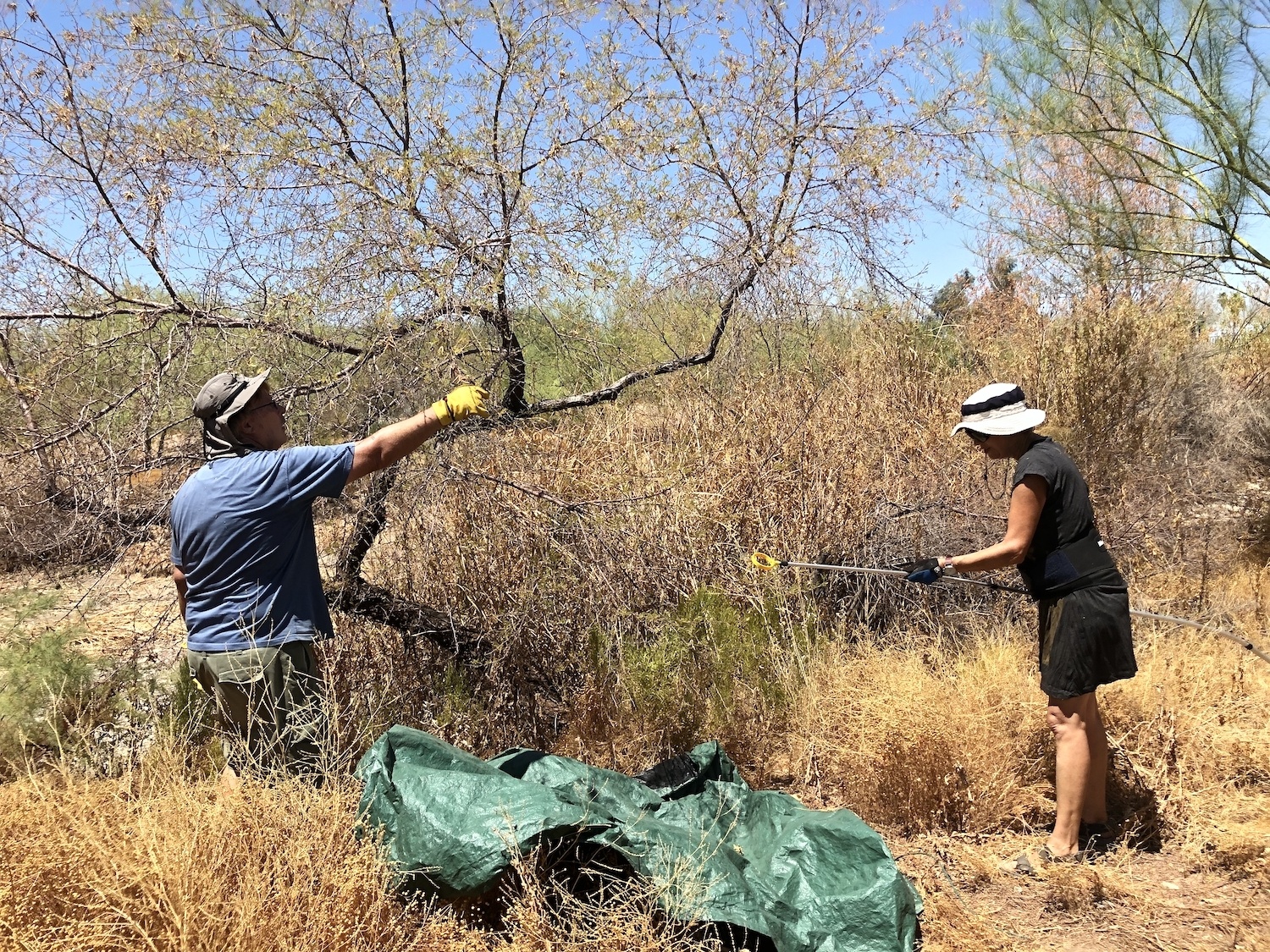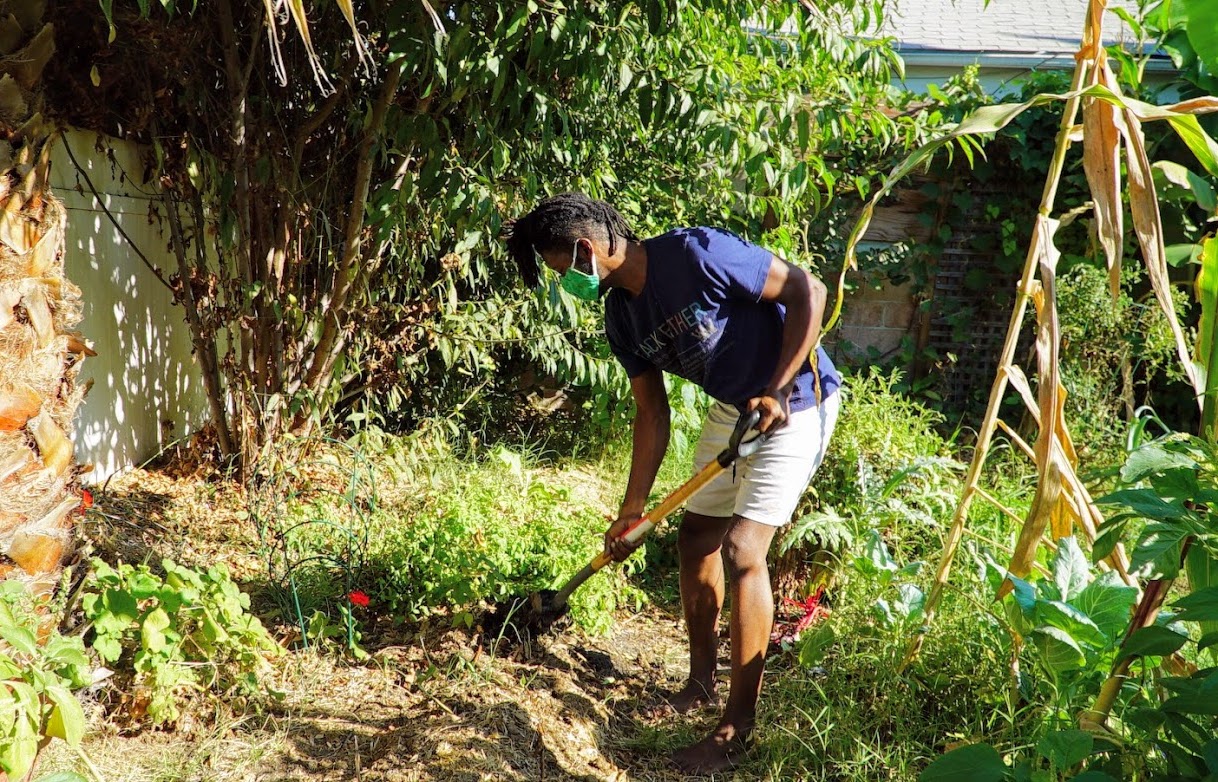
Colleen Hagerty
Grassroots groups are helping people without land access join a yard-sharing program to grow food for their communities.
It’s 9:30 A.M. in Los Angeles, and the sun is already squint-your-eyes strong. Sweat gathers on Jamiah Hargins’ forehead as he digs a shovel into the dirt of his West Adams backyard. He pulls a few short, green-leafed plants out of the ground, revealing the peanuts tangled in their roots. He cracks one open, gives it a taste. When they’re this fresh, he says, peanuts taste different, almost like fruit.
Hargins, a 36-year-old part-time talent strategist at the National Immigration Law Center, started growing food at home because he wanted more nutritious options for his family. He soon found that he grew more than they could eat, so he turned to social media to start a “crop swap” with neighbors who were dealing with a similar excess. Launched in 2018, Crop Swap LA has since moved towards a more expansive yard-sharing model.
“Really, our goal is to take unused space and farm it to create green jobs, sell that food, and create better health,” Hargins said.
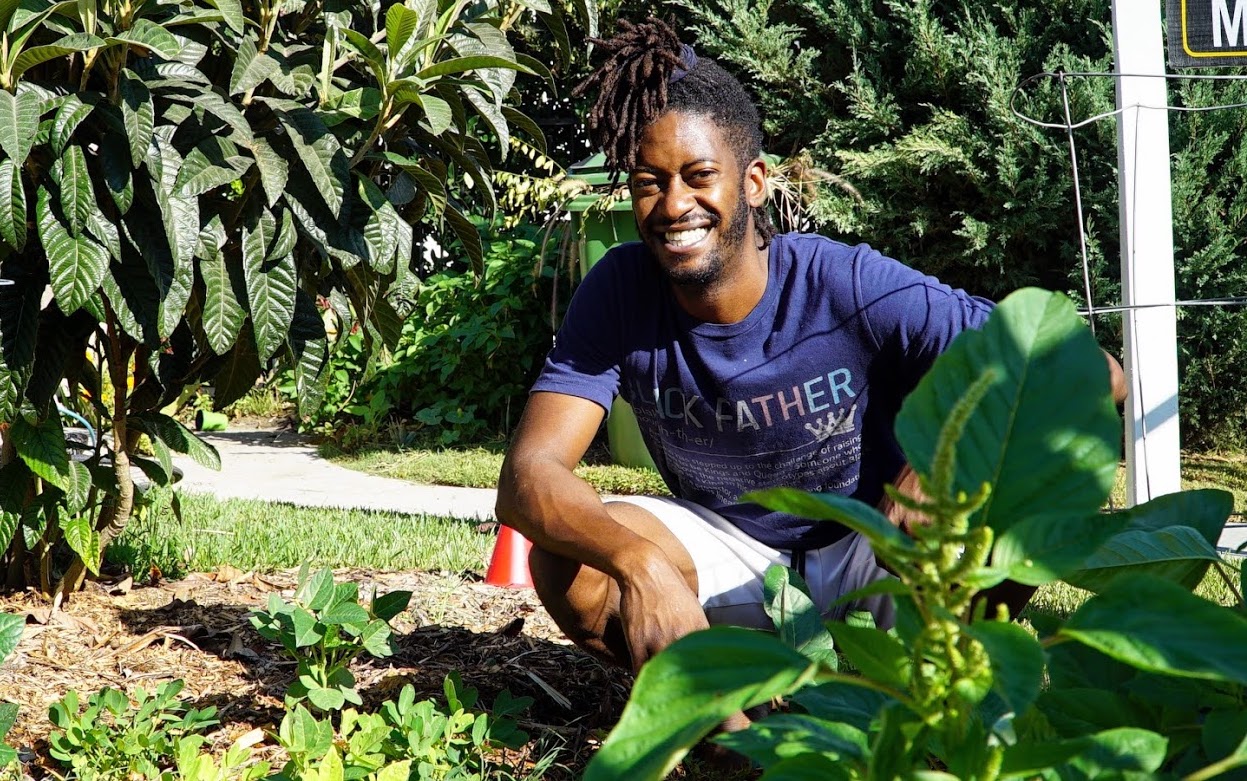
Jamiah Hargins, 36, founded Crop Swap LA in 2018 to redistribute an excess of homegrown fruits and vegetables to neighbors.
Colleen Hagerty
Urban agriculture, which includes cultivating plants and raising livestock “in and around cities” for local consumption, is practiced by more than 800 million people worldwide, according to the United Nations. While yard sharing might not have the name recognition of initiatives like community gardens, it’s a trend that has emerged in cities across North America, including Denver, Chicago, and New York City. For space-strapped areas, yard sharing offers an appealing partnership between those who want to grow their own food but lack the skills to do it and those who have the technical know-how but no space of their own to apply it.
Hargin’s foray into urban farming was also driven by bigger concerns, including how inequality in cities has created a divide between communities that get access to healthy food—higher income, often white—and those that do not. Hargins decided he wanted to put his agricultural knowledge to use in South LA, a chronically underserved area when it comes to food options.
Crop Swap LA has branched into farmer’s markets, workshops for kids, and other community-focused offerings—its next initiative is a for-profit yard-sharing program. The idea is to have homeowners “share” their yards with the Crop Swap LA team, which will plant an edible plot. The goal is to create a system that will have both ecological benefits and financial ones, with the resulting produce being sold primarily within lower-income communities and part of the profit going back to the landowners.
“I’ve seen other gardening organizations not do so well over time, because it’s about community and there’s no real goal.”
The concept also addresses a number of concerns that have emerged in the farming space, as consumers have increasingly questioned the practices behind their produce. A 2016 Deloitte study identified a shift in the priorities shoppers said helped determine their choices, with social impact values including local sourcing and sustainability now ranking alongside traditional drivers like “taste” and “price.” That focus has been reflected in the continuing growth of farmers markets and other means of local food sales, which have seen significant increases over the past two decades.
It’s a nod to the “long history of urban agriculture” in the country, explains Dr. Megan Horst, associate professor at the Portland State University Toulon School of Urban Studies and Planning.
“We can learn from the past and adapt historic practices for our times,” Horst said. Yard sharing, she believes, could be one example of that adaptation, taking a cue from what Horst calls “more collective ideals of property management,” or the openness to sharing private land for community use.
The model goes against advice he’s received to “sell to the rich folks and eat the extras in poor areas.”
Rhonda Teitel-Payne, the coordinator of Toronto Urban Growers (TUG), originally saw this as a hurdle for her organization’s garden share program.
“I thought, you know, I can’t imagine people wanting to give up space in their home to some complete stranger,” Teitel-Payne said. “But the response was pretty phenomenal.”
While there is no comprehensive data tracking the number of yard-sharing initiatives in North America—Horst said it is still a “niche practice”—TUG published a report based on its own experience to offer insight into the benefits and challenges of the model.
The group identified steps to setting up a successful program, from conducting outreach in different neighborhoods to performing site assessments for interested homeowners and then matching them with skilled farmers. TUG also provides a set of sample agreements for the parties involved to sign, in hopes of setting expectations and mitigating any disagreements.
An agreement process is essential “to create spaces for these people to develop safe relationships,” Teitel-Payne said.
She cites a number of positive outcomes from the partnerships TUG facilitated, including participants who were able to start small businesses selling the crops they were cultivating.
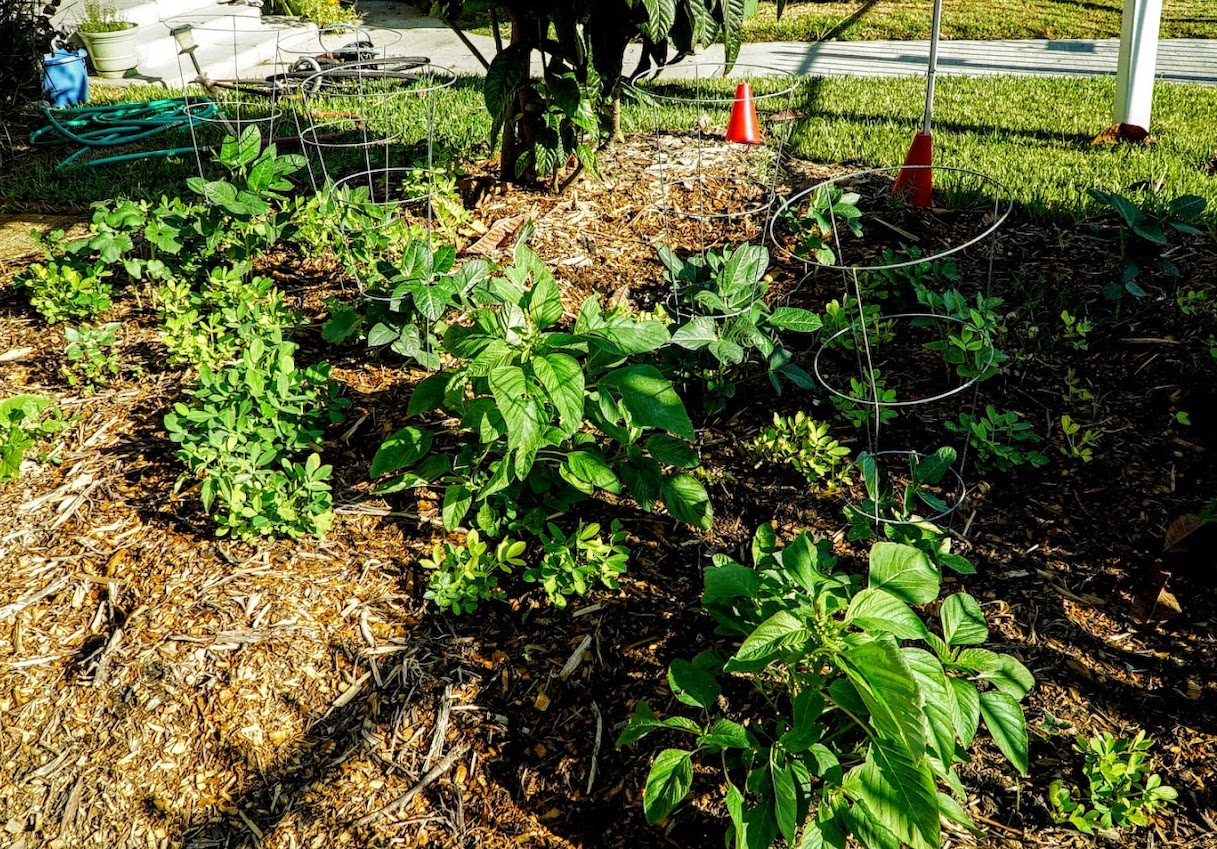
Yard sharing offers an appealing partnership between those who want to grow their own food but lack the skills to do it with those who have the technical know-how but not space to apply it.
Colleen Hagerty
For Hargins, establishing that sort of profitability is a key feature of his plan. “I’ve seen other gardening organizations not do so well over time, because it’s about community and there’s no real goal,” he said.
To create that incentive, his model is what he calls a “local nutrient transfer.” Crop Swap LA will install gardens on a sliding scale, putting a price on them for those who can afford it while using grant funds or donations to build them for homeowners without the means to pay. When the crops are harvested, they’ll be sold primarily in low-income zip codes, including to local chefs and restaurants in those areas. Ten percent will be donated back to the neighborhood where they were grown and then an additional percentage will be sold in higher-income areas. A portion of funds made are given back to the landowner, which Hargins expects will amount to about $5,000 annually.
The model goes against advice he’s received to “sell to the rich folks and eat the extras in poor areas,” he said. That ideology, according to urban planner Sara Draper-Zivetz, has been one of the prominent problems with grassroots efforts in the urban farming space.
“Different urban agriculture efforts bring a lot of positive to communities, but they can also be signs of gentrification.”
“Different urban agriculture efforts bring a lot of positive to communities, but they can also be signs of gentrification,” said Draper-Zivetz, who is also market manager at the Lawrenceville Farmers Market in Pittsburgh, Pennsylvania. “To be more explicit about it, I think there’s been a lot of evidence of younger, white, wealthier folks really excited about urban agriculture and siting that work in communities of color.”
The resulting programs, then, tend not to address the actual needs of those communities, selling produce at prices unreasonable for locals or even driving up the property values of those neighborhoods and pricing residents out. Horst, who co-authored a 2018 report on structural racism in the U.S. farming landscape, notes that there has been a historic gap between who does and does not have access to urban farming based on land ownership, a result of “centuries of racist policies.”
While both Draper-Zivetz and Horst expressed optimism about the potential of yard sharing, both also identified hurdles to implementing it on a larger scale, including the cost of continued upkeep for these gardens. There’s also questions about how this model will fare more broadly across U.S. cities “hyper-segregated by both race and income,” Horst said.
Fleet Farming, a Florida program that transforms urban lawn space into micro-farms, has experienced some of these challenges in its six years in operation. Born out of Ideas for Us, an environmental solutions incubator, the program began by converting one lawn in Orlando into a micro-farm, and what director Lee Perry described as a “billboard of how to utilize this very underutilized space.”
“In a community in which we don’t have agriculture readily available, there are individuals connecting, branching, bargaining, and creating a community using crops as the means of connection.”
As they attracted attention and expanded to more than 20 locations, they adjusted their model to better fit different areas. In one neighborhood, that meant switching from building micro-farms on private properties to putting them in community centers, schools, and places of worship. When they noticed people weren’t actually harvesting their gardens as originally expected, Fleet Farming set up a paid maintenance system, offering those who sign up a credit towards produce at local farmers and pop-up markets.
Hargins cites Fleet Farming as one of his inspirations and is similarly planning to create his own “billboard” in early 2021. This summer, Crop Swap LA received $50,000 from the LA2050 Grant Challenge, which Hargins says will go towards converting their first seven lawns, starting with a “beautiful corner house” located in the View Park−Windsor Hills neighborhood. The homeowner, Mychal Creer, is a Los Angeles native who said he has always wanted to start a garden but never really got the ball rolling. He’s excited to watch his land transform, to get his hands dirty, to have that sustainable food source outside his front door. And he’s excited to meet more neighbors.
“I do like the fact that, in a community in which we don’t have agriculture readily available, there are individuals connecting, branching, bargaining, and creating a community using crops as the means of connection,” Creer said.

